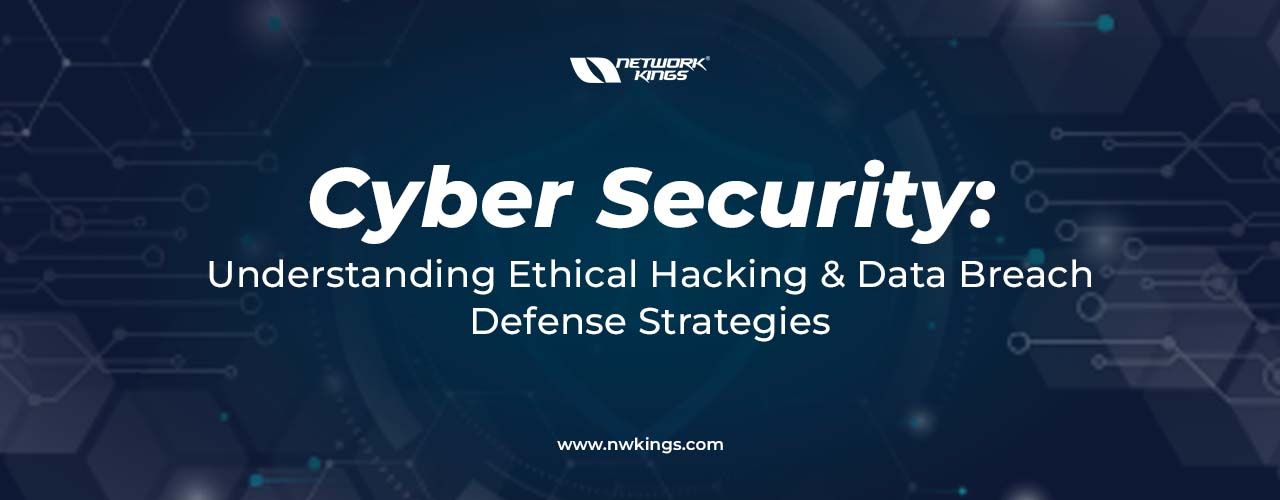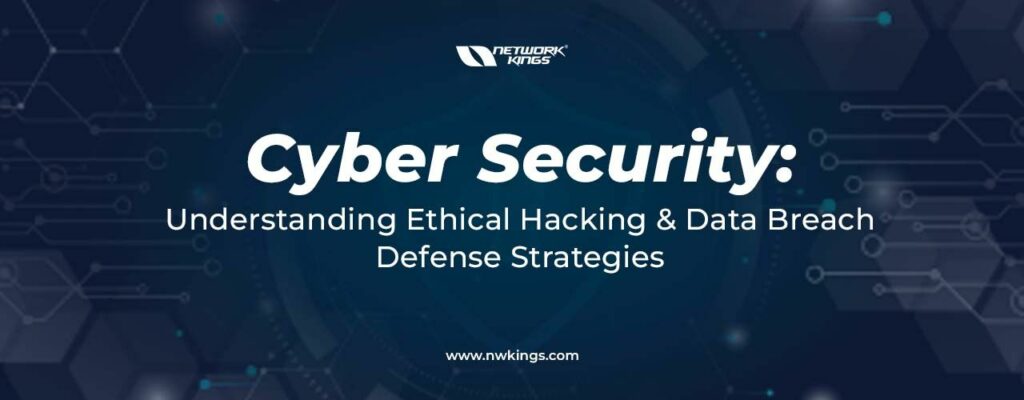
In this digital age, cyber hacking is worrying more and more people – it can affect anyone. Hacking involves deliberately exploiting weaknesses in computer systems to gain unauthorized access to information or resources. It could lead to really serious security issues such as internet theft, malicious software getting into your machines, or networks being broken into by criminals. This guide will provide an insight into what is hacking in cybersecurity, what hackers do, and how you can protect yourself against them.
Defining What is Hacking in Cybersecurity and its Importance

Cyber hacking has become a huge problem for cyber security in this digital age. It is basically when individuals or groups try to illegally access computer systems, networks, and data without the owner and user knowing about it. Most of the time hacking is done with bad intentions such as to get money out of companies or organizations or steal info etc.
In some cases, hackers even use ransomware which involves them trying to make people pay up before they can gain control again – quite scary! Cyber theft is also something that goes hand-in-hand with hacking since all these stolen bits of information could be used by criminals for malicious things.
As technology advances and our online presence grows, the risks associated with cyber-hacking become more pronounced – making it increasingly essential for businesses and organizations to take proper security measures. Hackers employ a range of techniques to achieve their aims; malware, phishing emails, and exploiting software vulnerabilities are common examples. They can also use social engineering tactics such as impersonation or rummaging around public databases to get into systems they should not be able to access. It is frightening how crafty hackers can be!
It is worth remembering that all hackers are not necessarily ill-intentioned – there are ethical hackers too, who work with cybersecurity experts to discover any potential vulnerabilities in systems and help make the protection against real-world threats even more robust.
Regardless, organizations need to implement rigorous security protocols to defend their assets from infiltration attempts. This could mean establishing firewalls, introducing anti-virus programs, or using encryption when sending confidential information over networks such as the Internet. By putting these measures into practice, companies can be sure that their data stays secure if an individual tries cyber hacking on them.
Understanding the Evolution of Cyber Hacking

Hacking is an expansive term that encompasses a wide variety of exercises, some of the most notorious being assaults on PC frameworks. In our advanced age, cyber-hacking has become a progressively normal risk to organizations including governments and people alike. However, what precisely is cyber-hacking? What have been its major jumps forward throughout the years, and what could be potential results?
The word hacking was created back in the computing days, but as time passed by it took another meaning altogether. Have you ever stopped to think about how exactly we got here with this today? How did all these security threats emerge out of nowhere so suddenly?
We all know the term ‘hacker’, but what does it mean? It used to refer to any type of computer programming or coding that went beyond writing software code for applications. In its early days, hackers were those with a knack for pushing technology further than it was meant to. As computers became more commonplace and boasted greater power, so did cyber criminals who looked to exploit them in pursuit of personal benefits or political advantage. These days we are sadly no strangers when news articles hit about data breaches at big companies like Yahoo and Equifax; security risks have become an unfortunate part of our lives online!
Before hackers became famous due to their malicious activities, they would attempt to get into people’s accounts or fudging with information through approaches such as social engineering. Social engineering is when cyber criminals alter how they behave so that individuals can be tricked into exposing confidential information like passwords and banking details which could then be utilized unlawfully for accessing systems. Presently, hacking has become more complex where wrongdoers not just want lucrative returns but also at times perform spying duties on behalf of third parties or foreign governments.
Advances in cryptography have enabled hackers to make the most of vulnerabilities in computer systems by sending malicious code through emails or embedded into website code – a technique known as ‘zero-day hacking’ – which bypasses security measures designed to prevent such assaults. And now, with artificial intelligence (AI) coming into play, attackers can employ algorithms that use machine learning techniques to identify and exploit weaknesses more rapidly than before – turning AI into an extremely powerful weapon for those hell-bent on chaos and destruction.
It is clear; that we must keep track of how cyber-hacking is evolving if we are going to stay one step ahead of those who want us harm – because as baddies get smarter at attacking networks, cybersecurity threats will remain a major issue well down the line!
Deep Dive into Security Breach Incidents
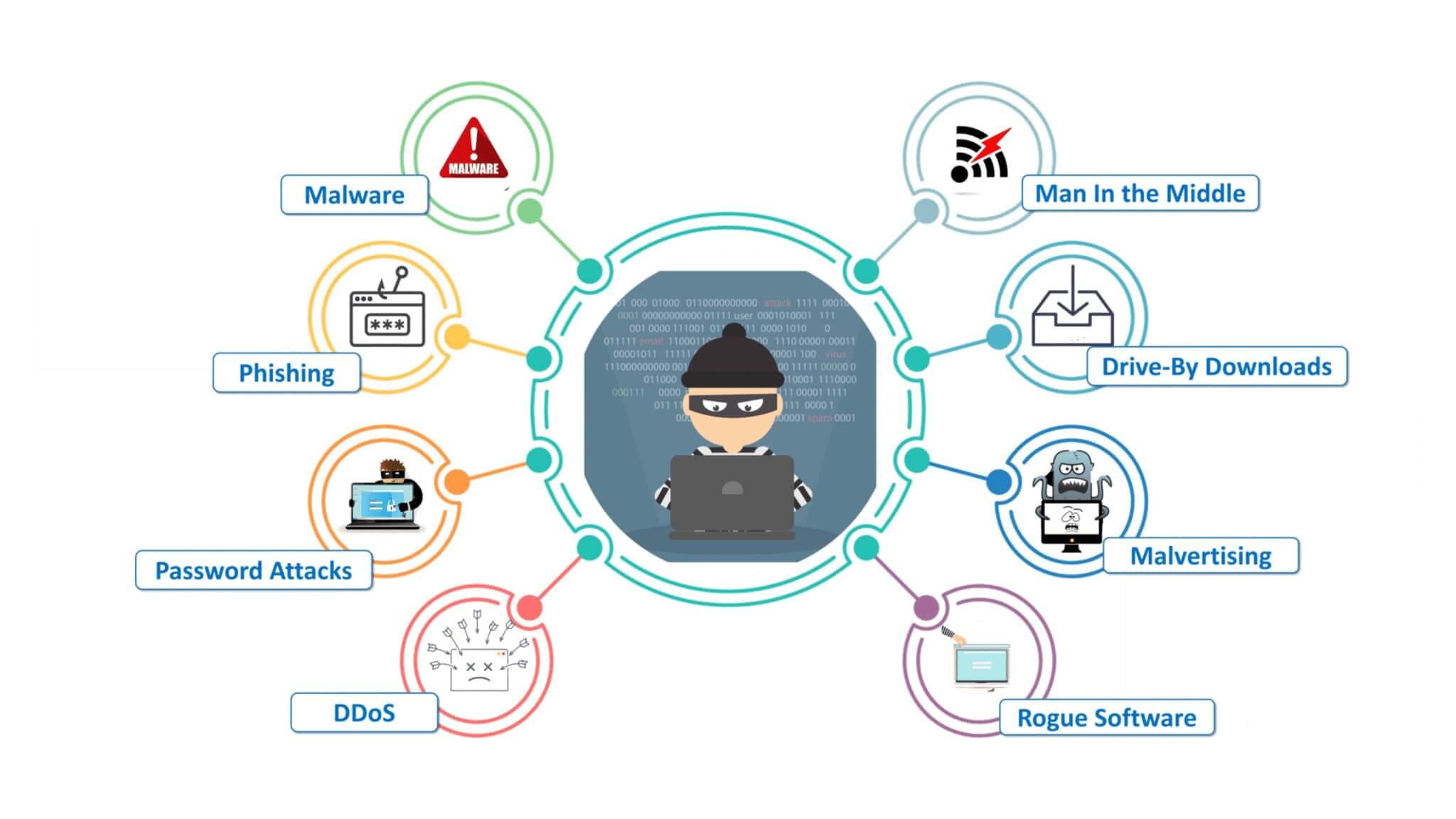
Navigating the world of cybersecurity can be tricky. We are going to take a look at security breach incidents, analyze how they happen, experience their aftermath and review ways we can protect ourselves from them in future. Hacking is when someone unlawfully enters your system – whether this was intentional or just an oversight does not matter; leaving it exposed makes you vulnerable to attack either way. So what do you need to know?
No matter the situation, when a hacker gets access to your system, they can do all kinds of stuff – from managing your network to stealing info or spoiling data. It is worth remembering there are different sorts of hackers too: those who want only harm (malicious hackers) versus those eyeing financial gain (cybercriminals).
Once these malicious and criminal activities have circumvented an organization’s security infrastructure and their secret information has been released or taken away, then that is known as a ‘security breach’. Scary right?
The effects of these occurrences can be anything from a minor nuisance to major economic losses, depending on the characteristics and effect of the violation. For example, if ransomware is involved then there is a risk that attackers will ask for payment to give back data while any kind of information theft could cause harm, such as identity robbery or reputation damage when confidential details like personal files are released.
Organizations must recognize that cyberattacks come in many guises with external hackers sending ‘phishing’ emails and internal scammers taking advantage through social engineering approaches that allow them access into systems without authorization. To thwart this menace, organizations should introduce safeguards that stop unapproved entry including firewalls, anti-virus software, and effective authenticating methods (e.g. two-factor authentication).
In addition, they should offer staff training about cybersecurity best practices so they can identify signs like phishing attempts or malicious downloads before it is too late.
The Role of Internet Theft in Cyber Hacking
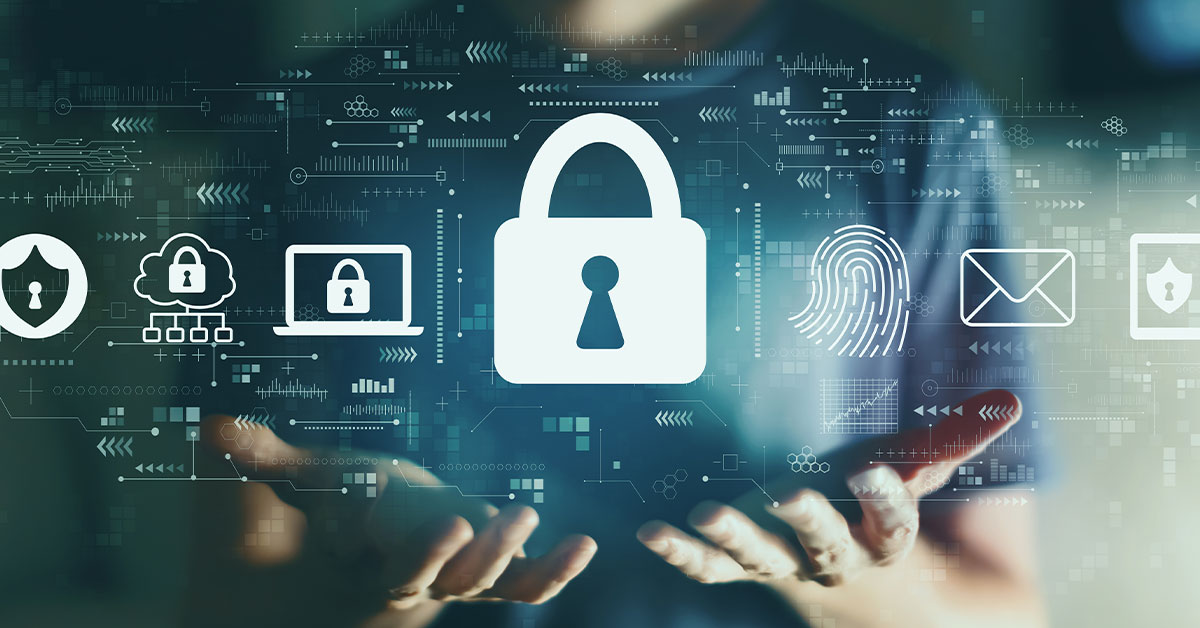
When it comes to cyber hacking, the problem of internet theft has been getting worse over recent years. Hackers are becoming more and more advanced with their knowledge meaning they can launch attacks on websites and networks that steal confidential information from people who do not even know what is going on.
This type of criminal behavior is commonly referred to as Internet theft – a crime that has become increasingly commonplace due to our increasing reliance on digital technology. It is worrying just how these hackers manage to access accounts, financial details, and personal identity data without us knowing!
Recently, there was a shocking breach at a popular online retail store which resulted in hundreds of thousands of customers’ data being leaked. It is now known that the source of this leak was a malicious hacker who had infiltrated the company’s network through sophisticated methods such as phishing attacks or malware infiltration – meaning they were able to access passwords, usernames, email addresses, credit card numbers, and other sensitive material for financial gain or identity theft. It makes you think; what would have happened if the victims had not been so lucky?
Internet theft is only one aspect of cyber hacking. There are plenty of other ways through which hackers can gain access to networks or computers without permission, such as exploiting software flaws and vulnerabilities, social engineering tactics, installing keystroke loggers for password-capturing purposes, using botnets for distributed denial-of-service attacks, and maliciously embedding code within applications or operating systems so they can be remotely controlled. Is it possible that someone could have this level of control over our digital lives? How do we protect ourselves against these intrusions?
Companies must make sure their machines are shielded against any types of cyber security risks via regular maintenance updates as well as thorough protection solutions such as firewalls and anti-malware applications. Moreover, suitable user training should be given so staff can comprehend the best way to stay away from these sorts of attacks.
Through carrying out these needed steps towards digital safety consciousness, organizations will be better placed when breaches take place – regardless of how almost impossible they might appear – which in turn leads to less likely damage caused by internet theft or some other form of cyber hacking action. All kinds of ways can be used for many malicious intentions including stealing data, disabling systems and networks, and taking command over accounts and servers.
The Menace of Malware Attacks in Cybersecurity

It is plain to see that hacking is a significant worry in the world of cyber security. Malware assaults are some of the most ordinary and perilous hack-related dangers, as they can quickly spread out across other users and machines causing chaos around networks. Let us look at ransomware for example – an extremely damaging type of malware attack, which gets into your device with malicious code, essentially locking all your documents until you hand over a considerable ransom. Another illustration would be phishing; this refers to criminals pretending to be real organizations so they can get hold of sensitive data such as bank information and passwords.
It is worth noting that these are just two of the nasty malware attacks out there – they are only a drop in the ocean compared to many other threats to your online safety. To keep yourself safe from any such attacks, it is essential that you take precautions like having secure passwords, using two-factor authentication wherever possible, and making sure that anti-virus software is regularly updated.
Additionally, pay attention if something suspicious arrives via email or through links sent to you – if an offer looks too good, then chances are it probably is not true (luxury holidays, for example!). Furthermore, keeping up with news on cyberattacks will also help when attempting to safeguard your security while browsing online. The best way to stay protected against malicious hacks is to be prepared: this means getting ahead of potential problems before any damage can be done!
Connection Between Network Exploitation and Hacking

Hacking is an integral part of the cyber security world. From malicious players breaking into business servers to activists taking down controlling regimes, hacking has been employed for manifold usages. One sort of hacking can be particularly treacherous: network exploitation. Network exploitation involves using existing tools and systems to access, observe, or manage computer networks and it can be classified as passive or active. Passive networking penetration includes a close eye on a specified system without really accessing it – this sounds very sneaky!
Imagine someone being able to watch your every move while having no way of you finding out… Quite unsettling isn’t it? To add further, they may also gather any data transmitted over that specific network with ease; making them privy information that could have otherwise only been accessed by intrinsic means. This level of infiltration creates huge risk factors, such as identity theft, which are not always easy to spot until too late.
This kind of exploit is often used by hackers who are after vulnerable systems that they can take advantage of in the future when circumstances are beneficial. The aim here is to amass as much information about their target so they can think up an attack specifically crafted for it. This passive exploitation method might be employed too, before more damaging attacks such as malware or bulk messaging campaigns.
Active network exploitation, on the other hand, involves attacking a targeted system with malicious tools and code to get control over it or gain access to it. In doing this, miscreants utilize different approaches ranging from discovering security flaws (e.g., bugs) in software codes, taking benefit from known defenselessness found in hardware or software components, all through social engineering techniques (like phishing emails) which hoodwink people into giving away passwords and additional secret data.
Network exploits may become particularly disastrous if victorious – permitting invaders entranceway to sensitive info or privileged accounts on the affected system, which enable them to further compromise affiliated systems… you understand why averting and spotting these sorts of exploits has turned out crucial for organizations today!
Different Types of Cyber-Hacking Methods
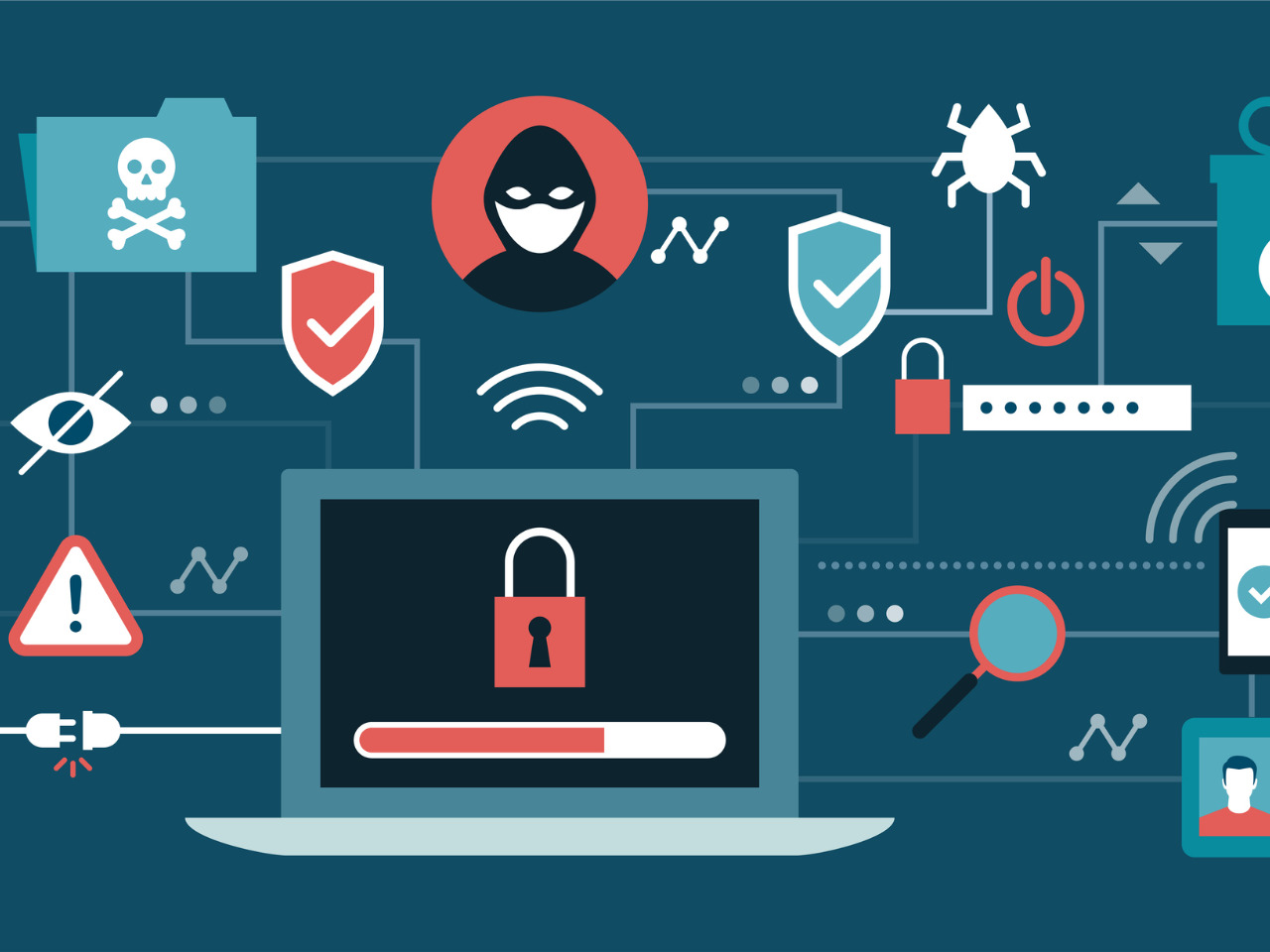
Cyber hacking is a major cause for alarm to everyone, both on an individual and business level – ranging from gargantuan corporations to the tiniest entities. Cybersecurity specialists and scientists have identified various kinds of cyber hacking techniques that attackers employ to target their victims.
One of the most frequently used strategies is brute-force assaults. In this kind of offensive move, hackers make use of a combination of letters, numbers, emblems as well as other characters so they can gain entry into somebody’s system through trying out passwords until eventually they get one which works! Can anyone be sure their security setup won’t fall foul?
Cracking passwords and phishing are two of the most popular methods hackers use to gain access to someone’s system or personal information. Cracking a password can become very demanding in terms of resources and time if the targeted system has complex passwords, or if there is more than one account with diverse credentials.
To make things easier for themselves, some hackers resort to using specialized software tools that automate this process. Phishing is another common approach whereby cyber-criminals send malicious emails that look legit but contain viruses intended for accessing private data or financial details. It is all too easy for people unaware of these traps to be tricked into clicking on links they shouldn’t – leaving their computers vulnerable!
It is essential to be aware of these kinds of cyber attacks, especially the ones that happen disguised as official messages from banks or other companies asking for sensitive personal data such as credit card numbers and bank account credentials. Don’t click on any dubious links in emails – it may have dangerous outcomes! Another type of nasty attack is Denial-of-Service (DoS). It happens when hackers overload networks with requests leaving them inaccessible for legal users. Can you imagine how counterintuitive this could turn out?
With the rise of malicious activities online, cyberattacks have become a common occurrence. This type of attack can be seriously disruptive because it takes websites offline until cybersecurity experts manage to tackle the issue. Additionally, social engineering has gained more and more traction in recent times – attackers use psychological methods to trick people into sharing sensitive info like passwords or private data.
For instance, they might pretend that they are IT technicians who need access to your system for maintenance purposes when they are trying to get their hands on confidential information without you realizing what’s going on. How would we protect ourselves from this sort of fraud?
Consequences of Failing to Prevent Cyber Hacking
Cyber hacking has become a real issue these days, with it referring to the utilization of tools and technology to gain access to confidential information that shouldn’t be out there. Unfortunately, when hackers are successful businesses have no choice but to bear the brunt of stolen customer data through reputational damage, which can lead to financial losses; this just shows how essential being proactive against cyber hacking is for any organization. It goes without saying – not even one system is completely secure! That’s why you need experts on your side who understand what they are doing and know how to keep things safe online.
It may seem like there is not much you can do to protect your data from cyber hacking, but that does not have to be the case. To keep yourself secure online, having a comprehensive security strategy is an absolute must. This includes policies for how staff should manage personal info, strong passwords protected with two-factor authentication systems, and frequent backups in place – all of which are essential steps any business needs if they want to be sure their information stays safe.
What’s more, businesses also need to ensure they are keeping up with the latest cybersecurity trends and technologies so as not to get left behind.
Staying on top of emerging threats like phishing emails and advances in technologies such as DLP (Data Loss Prevention) solutions is essential for any business. Investing in effective employee training and awareness programs can help staff stay ahead of potential risks, allowing them to take proactive steps toward minimizing damage before it is too late. It is also important businesses have an incident response plan ready if they do experience a hacker attack or malicious code breach – that way you are not left scrambling for answers when the worst happens.
Having a dedicated team of professionals to assess and respond to cyber attacks is essential. This can involve identifying the source, mitigating further harm by disabling accounts or wiping out infected computers, and restoring data if needed – all this to minimize any consequences such as lost customers or damage caused in terms of reputation. But prevention goes beyond relying on incident response plans alone; organizations must take necessary safety steps beforehand.
Case Studies of Significant Cyber Hacking Incidents
Hacking is a word employed to refer to activities conducted by malevolent cybercriminals and is recognized as one of the most severe risks for cybersecurity. Even though hackers may sometimes be characterized like they are a unified group, the reality is that there are multiple distinctive types of hacking techniques implemented by criminals online. To garner an understanding of these varying types, how they perform, and their potential effects, we can have a gander at some case studies about influential cyber-hacking incidents. A renowned example was in 2016 when Yahoo suffered from a data breach that affected 3 billion accounts.
A cyber attack on Yahoo in 2017 saw the perpetrators exploiting an SQL injection technique that enabled them to obtain names, emails, passwords, and phone numbers of user accounts – a hefty loss for the company that is estimated at around $350 million due to not having adequate security measures in place. Even more shocking was the WannaCry ransomware incident that has led to 230 thousand computers being affected across 150 countries with users paying ransom just so they could regain access to their systems.
Ransomware took advantage of weaknesses in Microsoft Windows operating systems through a code called “EternalBlue ”. It is thought that the hackers managed to get around $140 million from individuals who could or were willing enough to pay the ransom fee. Another incident, that happened this year, was when Twitter got hacked and users were requested for cryptocurrency transfers with an assurance of their money being doubled within 30 minutes if they complied.
The attackers managed to get their hands on some distinguished accounts, such as Bill Gates and Elon Musk’s, then gathered more than $100,000 worth of Bitcoin payments before Twitter was able to end the hack and take back control. These three cases illustrate how diverse and skillful hacking can be when done by practiced criminals with access to potent tools or knowledge regarding flaws in networks or software programs/applications/systems etc.
They also show just how essential it is for individuals as well as organizations alike to exercise adequate caution concerning cybersecurity issues – understanding the risks associated with leaving systems defenseless against malevolent attacks from hackers seeking benefit financially or any other way imaginable.
Wrapping Up!
In conclusion, then, it is critical to appreciate just how dangerous hacking can be. From social engineering and online theft through to malware attacks and network exploitation – no computer system is safe from cyber criminals. So, if you want a bit of peace of mind when surfing the web, we’d highly recommend doing your due diligence: stay up-to-date on all security trends plus make sure you are practicing good online safety habits as much as possible! It might take some effort but believe us – in this case anyway – being vigilant does pay off.
Are you after launching a successful career in CyberSecurity? You have come to the right place! Our dedicated CyberSecurity Master program gives all of the resources and expertise needed for accomplishing success within this fast-paced industry. Our cybersecurity courses are created by specialists, making certain that our graduates possess the most recent information and abilities vital for coming out on top as industry innovators.
On top of that, you will get real-world practice under experienced oversight. So why delay? Sign up with our CyberSecurity Master program today and take your profession further than ever before! Have any hesitations about reaching such high heights? Don’t worry – we are there to help you throughout every step of your journey towards becoming an internet security expert.
Are you keen to become a cybersecurity expert? You don’t need to look any further than our CyberSecurity Master Program! We will provide you with the cutting-edge learning and experience required to become one of the most sought-after professionals in this space. Our courses are specially designed, plus we have hands-on projects – both will give you all the skills necessary for success. As well as that, benefit from our network of experts who can offer career advice and mentorship.
Don’t miss out on such an incredible opportunity – sign up now for our CyberSecurity Master Program!
Happy Learning!

